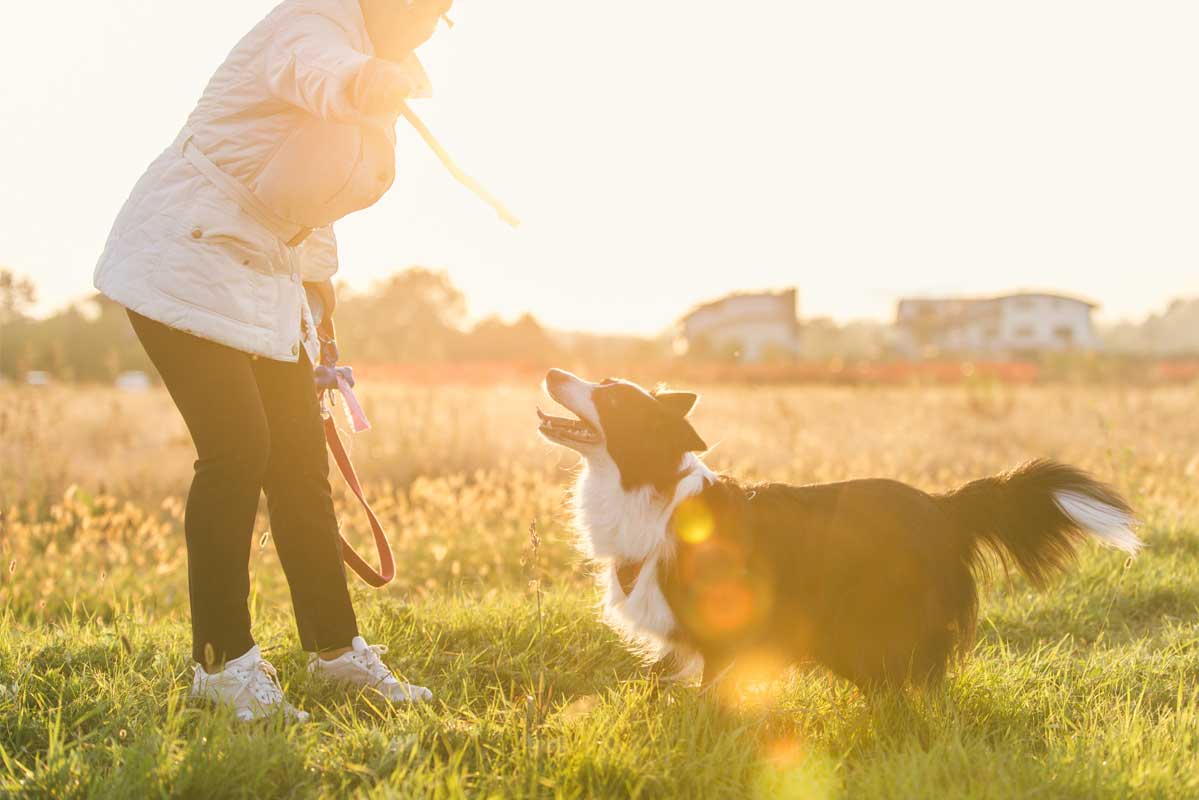Among other things, pet ownership can decrease stress hormones like cortisol and increase the presence of feel-good chemicals like serotonin and dopamine, Zuckerman says. AKA, having a pet in their lives can make older adults, well, happier. And experiencing more feelings of happiness never hurt anyone, no?
Plus, “we know pet ownership reduces instances of anxiety and depression” too, Zuckerman notes. Some studies show there’s even a positive relationship between physical activity and dog ownership, specifically, when it comes to older adults being pet owners.
Another thing of note: ownership isn’t necessarily a requirement in order to garner many of these benefits—even just the tactile sensation of petting an animal (literally any animal!) can bring about positive feelings in many older adults, Zuckerman says.
With all these supposed benefits you’re probably wondering: what’s the catch? If they’re so good for you, why don’t all older adults interact with pets on a regular basis? In truth, there are certainly some downsides to older adults and pets that are worth noting as well. Here’s what you should know…
The Pros And Cons To Older Adults Interacting With Pets And Animals
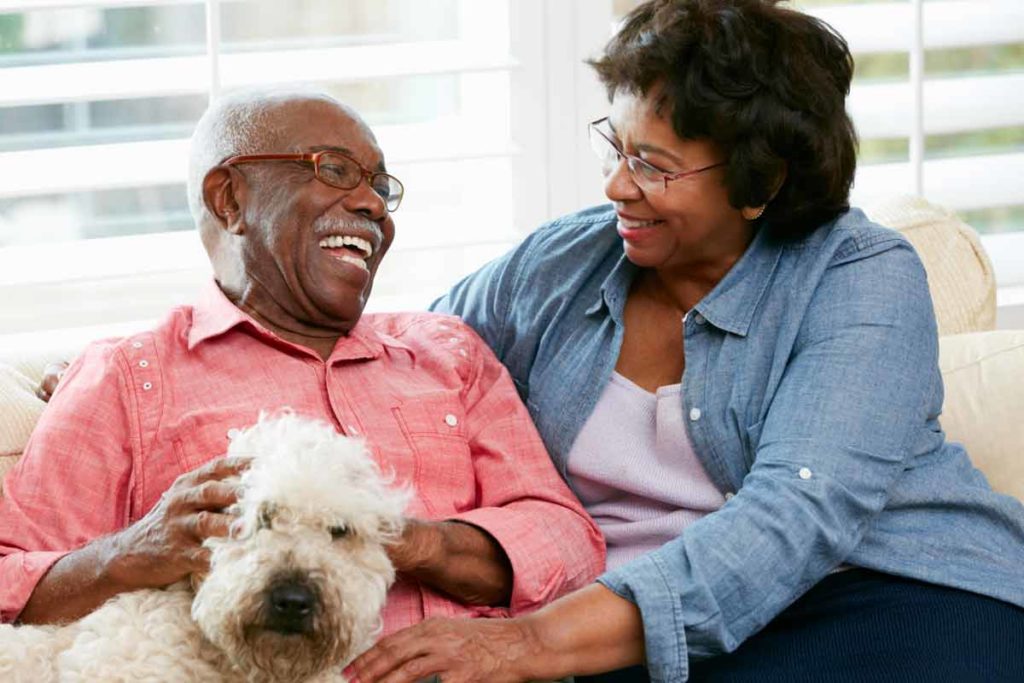
The following is everything you need to know about older adults and pets—including various ways older adults can interact with pets, what caveats to look out for, more neurological benefits, how they promote socialization, and more, according to expert sources.
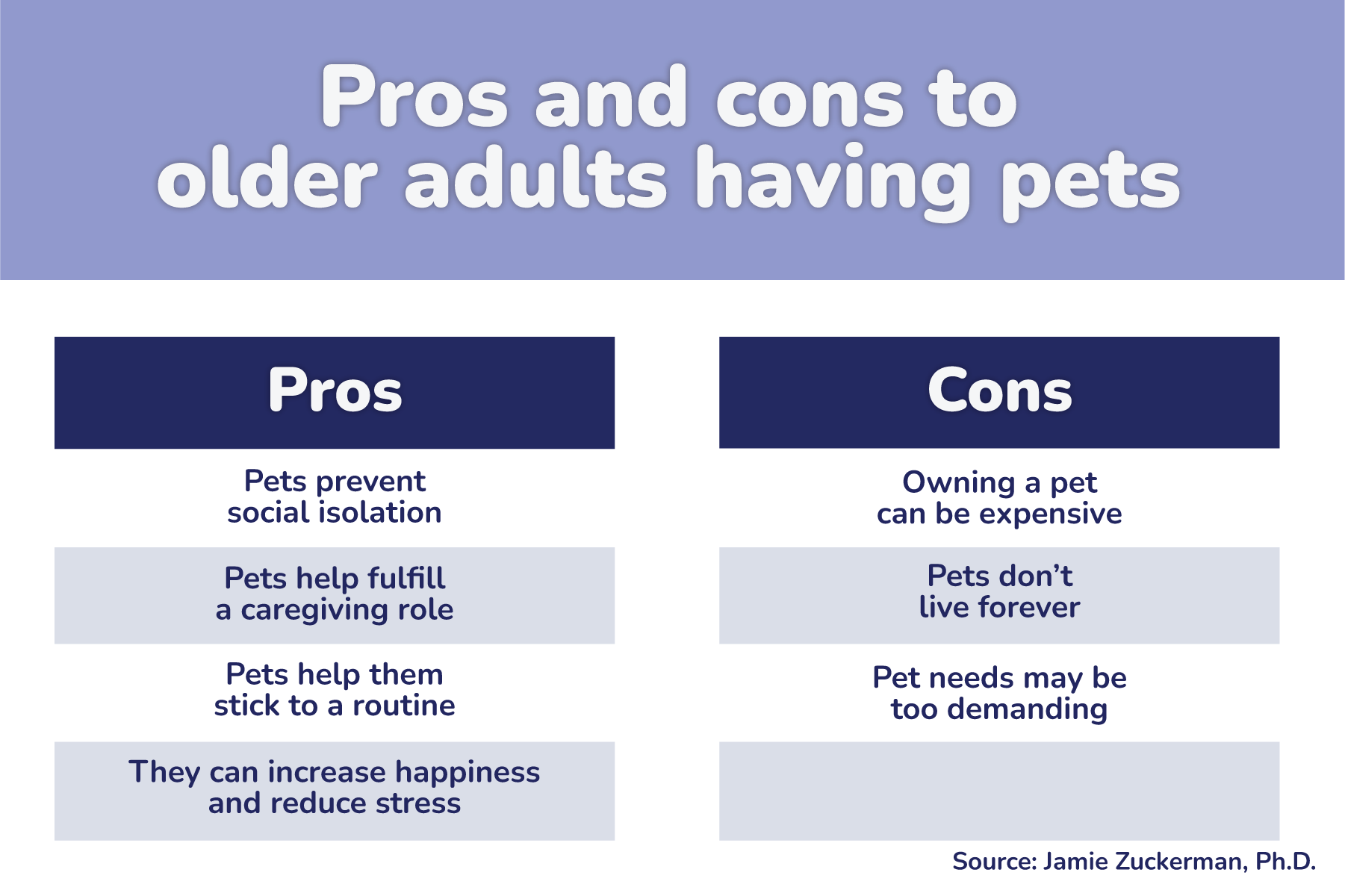
(1) PRO: It prevents social isolation.
For starters, pets are a great way for older adults to prevent feeling socially isolated, which can lead to feelings of depression and anxiety, Zuckerman says. Whether they are without a partner, unable to see friends, have difficulty traveling, or are simply distant from family members or friends, having a pet can give them that sense of closeness for which they are searching.
Plus, having a pet brings about a slew of other scenarios in which older adults have the opportunity to socialize. “If somebody’s walking a dog, people stop. It makes people gravitate toward them in general,” Zuckerman notes, and there are tons of places where other pet-owners congregate for a sense of community like pet stores, dog parks, nature trails, and the like. Plus, if the older adults have family, such as grandchildren, it gives people a reason to come over and be with them—all in all, it facilitates socialization, Zuckerman says.
(2) PRO: It helps them fulfill past roles and routines.
Having a pet also helps older adults engage in past roles that are no longer present in their lives, explains Jennifer Stelter, Psy.D., a licensed clinical psychologist and owner of the Dementia Connection Institute. “They’re able to reinforce their caregiving skills and have a sense of purpose, even if their children and grandchildren are already grown up,” Stelter says.
“They feel like they’re serving somebody,” she explains, which can boost their mental well-being and provide more structure and routine in their day, since many pets will require feeding, bathing, or playtime on a regular basis.
(3) PRO: There are many neurological benefits.
As mentioned, the purely tactile sensation of petting animals releases feel-good chemicals like serotonin and dopamine in the brain. This increases happiness and reduces stress, and can even reduce some cardiovascular risk factors in older adults, Zuckerman says.
In general, sensory stimulation is particularly beneficial for older adults as it helps “nourish the brain,” Stelter says. Sensory stimuli such as touch, sight, and sound are processed in the limbic system of the brain where two integral organs live: the amygdala and the hippocampus, responsible for processing emotions and storing new memories, respectively.

The positive sensory stimuli that results from the experience with the animals influences the individual to feel positive emotions and, as a result, motivates positive behaviors. “This is why pets can be such a joy to have around, especially for the older population” who might need these experiences more than most, Stelter says.
(4) CON: Being a pet-owner is expensive.
“Among other things, being a pet owner is expensive,” Zuckerman says. “With older adults, they’re already concerned about how they’re going to pay for their medications and doctor’s appointments,” she says, which is why it’s best that any older adult seeking a pet ensures that they have the disposable income to cover daily necessities or even in case of emergency veterinary visits.
(5) CON: Unfortunately, animals don’t live forever.
“Whenever you have an animal, there’s unfortunately always the risk of them dying,” Zuckerman says. And because it’s typically recommended that older adults choose adult-aged pets instead of babies or pups, the risk of a pet’s unexpected death is higher. This might trigger feelings of sadness and depression in the owner— the exact opposite of the intended purpose, Zuckerman says.
That said, even in the worst case scenario doesn’t need to be all bad: “It may be comforting for them to know that they cared for an animal at the end of its life, and it may even make them more at peace with their own mortality,” Zuckerman says.
(6) CON: Not every older adult can care for a pet 24/7
Because all older adults experience varying levels of physical and mental capabilities, it’s possible that some might not be able to care for a pet on their own. Perhaps they’re regularly in and out of the hospital, have a disability, or are simply not mobile enough to be a caregiver for an animal. While this might be frustrating for some—it’s no reason to stress.
There are several other ways in which older adults can interact with animals, including programs like pet therapy, volunteer opportunities, and the like.
Ways that older adults can interact with pets and animals
The following are various ways that older adults can have the opportunity to get involved with animals in their lives outside of normal pet ownership.
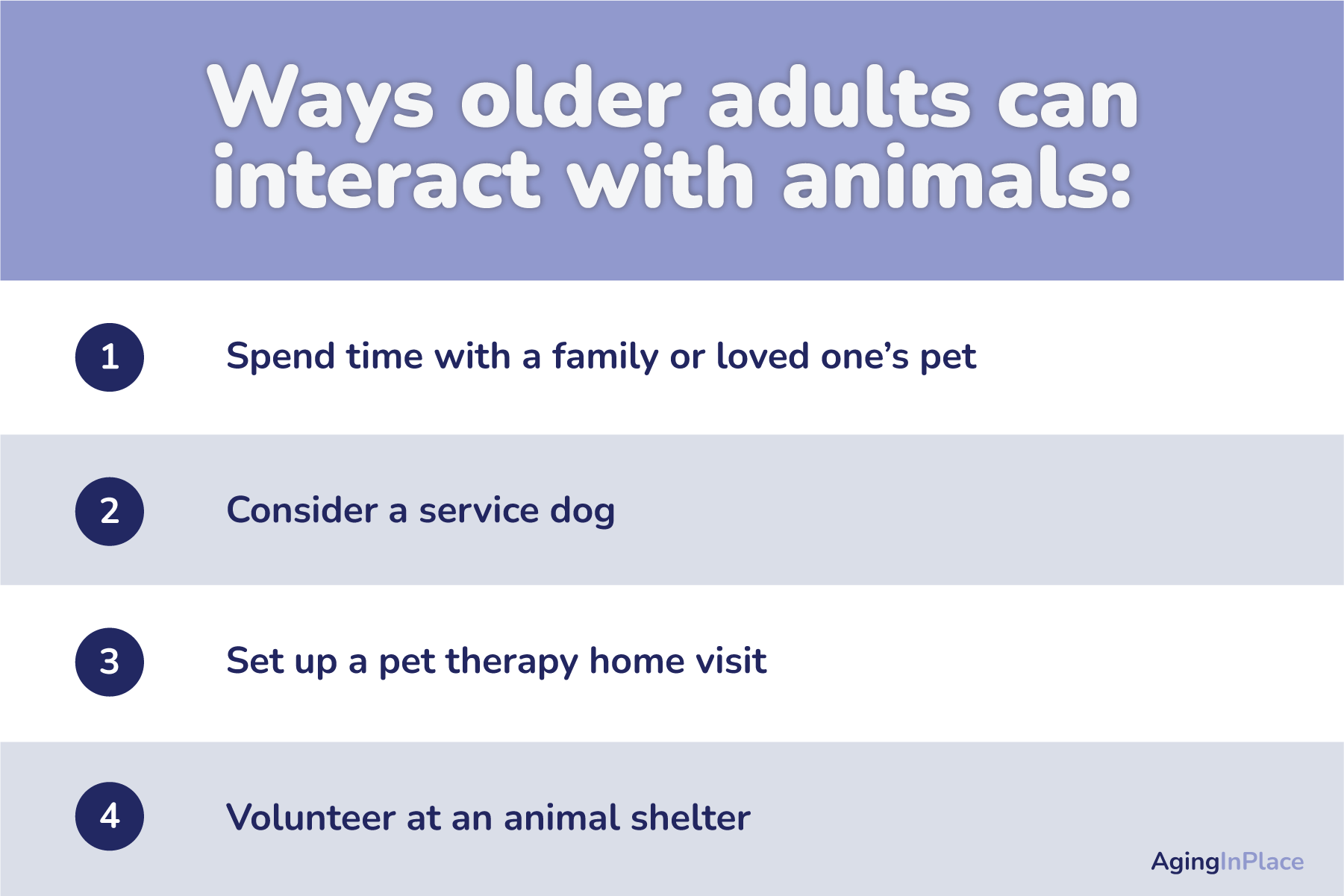
(1) Animals in your family circle or community
If older adults have family members with pets, they can bring the animals over to the home of the older adult (or vice versa) so that they have the time to interact with the animal, Zuckerman says. This allows the older adult to reap the benefits of the pet-to-owner stimuli without necessitating all the responsibilities partnered with having a pet in their individual care.
Older adults can also ask their neighbors or other community members if they can care for their pets a couple of days per week, or if they can be a designated person to care for them while the neighbors are away. “This can help give them a sense of purpose and a reason to get out of the house,” Zuckerman says, but again, it’s not the full-time responsibility of owning the pet themselves.
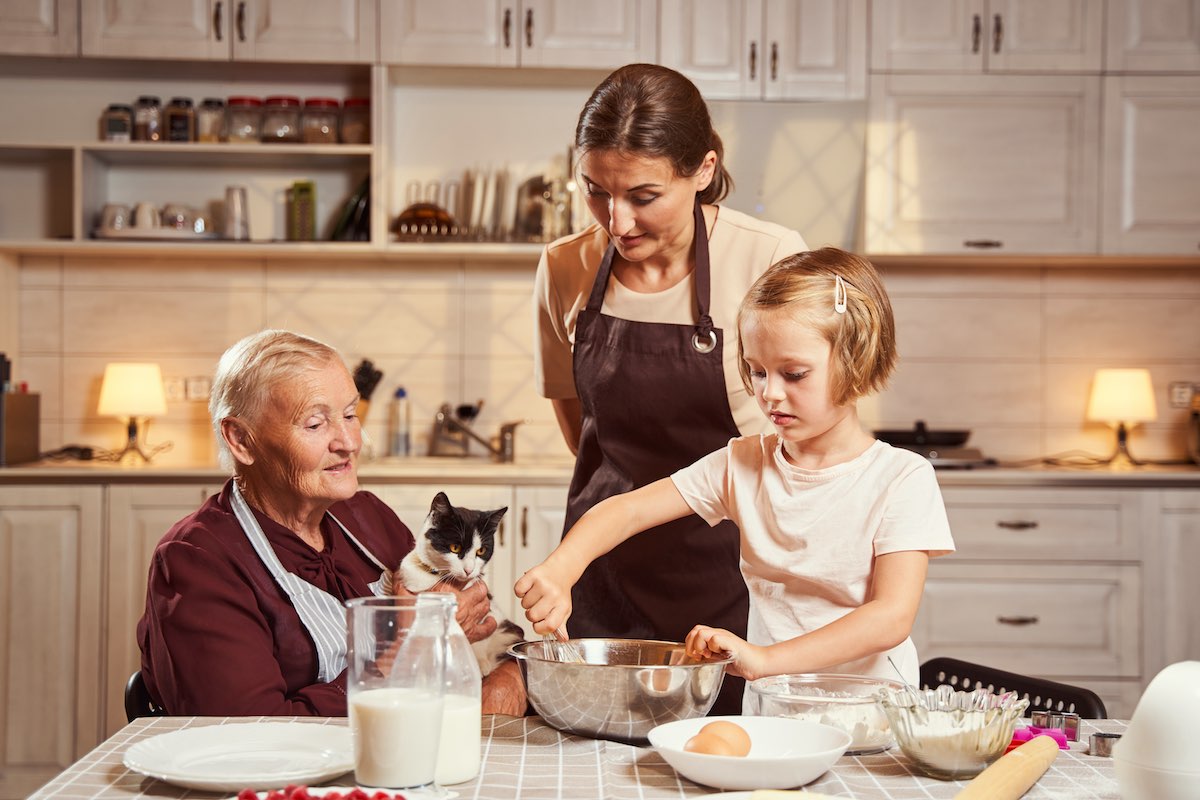
(2) Service dogs
“Certified pet therapy dogs undergo intensive training. They’re not aggressive or startled by loud noises,” Zuckerman says, and there are service dogs taught to help older adults be more independent and more navigable for the older adult. Their abilities include (but are not limited to): they can turn off/on lights, press door-open buttons at wheelchair accessible doors, and retrieve items the person can’t reach, and aiding in emergencies (i.e. get help if the person falls, or if the dog senses the person is about to have a seizure). Overall, the extensive training that service dogs go through to be self-sufficient and helpful might be the best case pet-ownership scenario for some older adults.
(3) Pet therapy
There are pet therapy services all over the country that organize home visits, assisted living facility programs, and hospital check-ins alike, Zuckerman says. Alliance of Therapy Dogs and Therapy Dogs International are volunteer-run organizations with outposts all over the world, for example.
Here’s how it generally works: A local volunteer will come to your home and bring a trained animal that is well-behaved and can cuddle, and perform commands during a session with an older adult. These services are typically dog-focused, but there are other popular forms of animal-assisted wellness such as equine therapy, too, which is when humans work with horses to improve their mental health, Stelter says.
(4) Volunteering at an animal shelter
Finally, there are animal shelters where older adults can offer up their time and resources. “I think volunteering at a pet shelter is integral for the older population because it gets them out of the house, around animals, and involved in their communities,” Stelter says. Older adults can check out shelters in their local area to find volunteer opportunities, and may even want to consider fostering animals on a night–to-night basis before they go to their permanent homes.

Conclusion: Consider What’s Best For You
Owning a pet while aging in place is not for everyone, but it can bring a lot of happiness and love into a person’s life. Ask your veterinarian, family members, and doctor if this is the right decision for you and your health. All in all, you can trust this: if you are able to be more involved with pets and animals, the effects can certainly be life-changing for the better.
Do you want to cite this page? Use our ready-made cite template.
